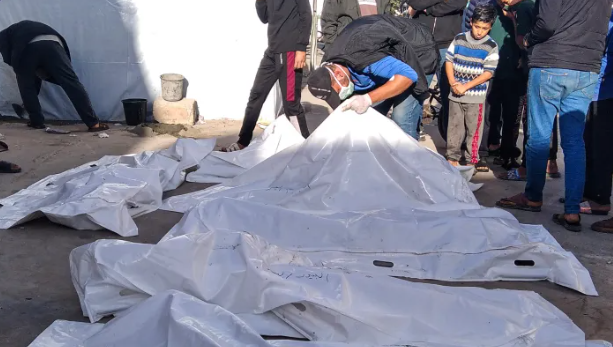Gaza – Saadiya Obeid
“Id I knew where he was—even in a dangerous place—I’d go bring him back, alive or dead. What matters is knowing where he is.”
With this sentence, Ikram al-Astal sums up her family’s tragedy as they continue searching for her son, Odeh Basheer al-Astal, who disappeared on the evening of February 26. He left his tent in al-Mawasi, west of Khan Younis, and never returned. Since that day, the family has lived between impossible hope and ever-present fear.
23-year-old Odeh, a young man with special needs, was known for his calmness, kindness, and his daily phrase: “Good comes from God.” His mother says: “His absence is a black hole in our lives—no sleep, no peace. We’ve searched everywhere: hospitals, morgues, missing persons records, even social media. There’s been no trace.”
“Every day I ask myself: has he eaten? Has he drunk? Is he even alive?”
Nasser Morgue: The Last Line of Defense for the Dignity of the Dead
In a corner overwhelmed by scarcity and grief, Dr. Ahmad Dhuheir, head of forensic medicine, works with his small team to give every unidentified body a chance at recognition, documentation, and—perhaps—reunion with loved ones.
“Each unidentified body is kept for 48 hours before burial,” Dr. Dhuheir explains. “We wait for families to come forward. We document everything: clothing, distinguishing marks, photographs, even the circumstances of where the body was found.”
But with the overwhelming numbers, they often resort to collective burial in concrete vaults due to the lack of cemeteries. “We record every detail,” he says, “with the help of the Ministry of Endowments or NGOs like Qartoun, and whenever possible we log burial sites using GPS.”
Forensics and Evidence: Every Body a Story with a File and a Code
Lt. Col. Sameh Hussein Hamad, director of forensics in Khan Younis, insists: “It’s not just a body—it’s a story that must be understood before it is buried.”
He describes the meticulous process: “We document everything before removing a body: its location, belongings, clothes, identifying features. We photograph it fully, assign a number and code, and store it in both digital and paper archives. All of it is preserved until, someday, someone can recognize the unknown.”
The challenges are immense. “We already have more than a thousand unidentified files, each with 10 to 15 photographs. Every day, we receive 15 to 20 new missing cases. There’s no proper facility for families, no infrastructure worthy of the task.”
From the Field to the Morgue: Double Duties in Wartime
Lt. Col. Sameh describes another side of their work: “Often we go out with Civil Defense to dangerous areas to collect bodies, as we did at the Mirage Junction. Our job doesn’t begin at the morgue; it starts at the scene. We document, photograph, record notes, and then follow every case through until it’s stored in the archives.”
At times, they are forced to publish identifiable photos of bodies on social media, giving families one last chance to recognize their loved ones when no one comes forward.
But resources are limited. Dr. Dhuheir admits: “We lack specialists in forensic odontology, osteology, and advanced identification sciences. We try to preserve evidence, hoping for future international cooperation that could help identify the still-unknown.”
Odeh: When a Human Becomes a Question
The story of Odeh Basheer al-Astal is not unique—it is one among countless others. Families search desperately, while officials struggle to do more with less.
But the greatest obstacle is time. Decomposition advances. Resources dwindle. Numbers multiply. In overcrowded morgues, in overfilled files, and in memories burdened with images, teams continue their work in a race against forgetting.
For the system, Odeh may be just another number among thousands.
For his family, he is life itself.
And for the nation, he remains an open wound—one that can only close with certainty.

